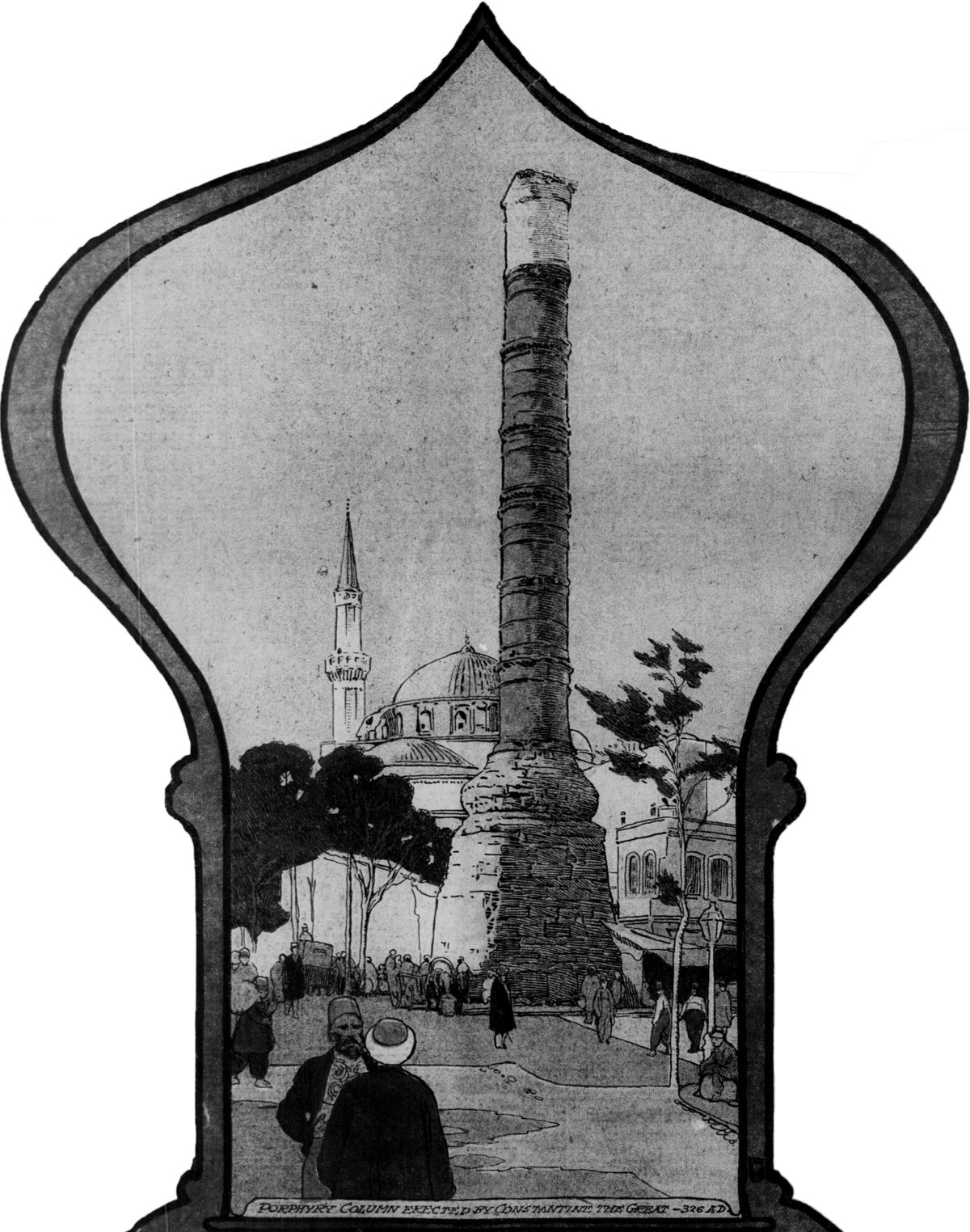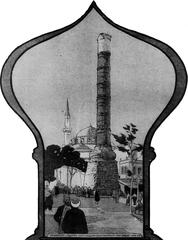
Gazi Atik Ali Pasha Mosque Istanbul: Visiting Hours, Tickets, and Comprehensive Visitor Guide
Date: 14/06/2025
Introduction
The Gazi Atik Ali Pasha Mosque is a distinguished historical landmark in Istanbul’s Fatih district, embodying the architectural innovation and cultural richness of the early Ottoman Empire. Commissioned in 1496 by the influential Grand Vizier Gazi Atik Ali Pasha during Sultan Bayezid II’s reign, the mosque stands as a milestone in the evolution of Ottoman religious architecture. Beyond its spiritual function, the mosque served as a community hub, integrating education, charity, and social welfare—a testament to the multifaceted role mosques played in Ottoman urban life (Istanbul Metropolitan Municipality; Islamic Arts Magazine).
This guide explores the mosque’s history, architectural features, cultural significance, and provides practical information for visitors, including current visiting hours, accessibility details, nearby attractions, and essential tips for making your visit memorable (ArchNet; Triphobo).
Table of Contents
- Historical Background & Patronage
- Architectural Features and Innovations
- Socio-Religious Role and Cultural Significance
- Preservation and Restoration
- Practical Visitor Information
- Nearby Attractions
- Frequently Asked Questions (FAQ)
- Summary and Final Recommendations
- Sources and Further Information
Historical Background & Patronage
The mosque was constructed between 1496 and 1497 by Gazi Atik Ali Pasha, a prominent statesman of Bosniak origin who served as Grand Vizier under Sultan Bayezid II (Islamic Arts Magazine). The project was part of a broader külliye (complex) that included a madrasa (school), imaret (soup kitchen), haniqah (Sufi lodge), and an elementary school, reflecting the Ottoman tradition of integrating religious, educational, and charitable functions within one precinct (ArchNet). The mosque’s location near the Grand Bazaar and Column of Constantine underscores its centrality in Istanbul’s spiritual and commercial life (Triphobo).
Architectural Features and Innovations
Exterior Design
The mosque exhibits the early “Istanbul style,” marking a transition from the Bursa style to the classical Ottoman period. Its striking central dome—spanning 13.3 meters—is supported by six pillars in a hexagonal layout, a precursor to structural solutions seen in later imperial mosques (ArchNet). The exterior, built from finely cut ashlar stone, features a modest portico with slender columns and a single, elegant minaret—rebuilt after earthquake damage (Istanbul Tourism Portal; We Love Istanbul).
Interior Decoration
The spacious prayer hall is illuminated by symmetrical rows of windows, creating a luminous atmosphere. The interior is adorned with geometric patterns and Quranic calligraphy, particularly around the dome. The mihrab (prayer niche) and minbar (pulpit) are crafted from marble with intricate muqarnas and carved details (Gezibilen). While the mosque predates the widespread use of Iznik tiles, it features restrained yet elegant ornamentation.
Unique Features
Unlike many Ottoman mosques, the original design did not include ablution fountains or a water tank. These facilities were added later. The mosque’s ancillary buildings, such as the madrasa and imaret, underscore its role as a center for education and charity (We Love Istanbul).
Socio-Religious Role and Cultural Significance
The Gazi Atik Ali Pasha Mosque was more than a place of worship; it was a hub for intellectual, spiritual, and charitable activities. The complex’s madrasa attracted students from across the empire, while the imaret provided meals for the poor and travelers. The mosque’s strategic location fostered interactions between merchants, scholars, and worshippers, reinforcing its communal significance (ArchNet).
The mosque also serves as a burial site for its founder, Gazi Atik Ali Pasha, and other notable figures, adding to its spiritual resonance. Its continued use for daily prayers and religious festivals ensures its relevance in contemporary Istanbul.
Preservation and Restoration
The mosque has withstood several major earthquakes—most notably in 1648, 1716, and 1766—prompting repairs and restorations to preserve its historic character (Istanbul Archaeological Museums). Restoration efforts in the 20th and 21st centuries, overseen by the Turkish Ministry of Culture and Tourism, have maintained the mosque’s structural integrity and accessibility (Turkish Ministry of Culture and Tourism).
Practical Visitor Information
Visiting Hours and Tickets
- Hours: Daily, 9:00 AM – 6:00 PM (Closed to tourists during prayer times, especially on Fridays around noon and during religious festivals.)
- Tickets: Entry is free; no tickets required. Donations for upkeep are welcome.
Accessibility
- Physical Access: The mosque is partially accessible for visitors with mobility challenges; ramps are present, but expect some steps and uneven surfaces.
- Facilities: Restrooms and ablution areas are available for visitors.
Getting There
- Public Transportation: The mosque is located on Yeniçeriler Street in Çemberlitaş. The nearest tram stop is Çemberlitaş (T1 line). Several bus lines also serve the Fatih district. The mosque is within walking distance of the Grand Bazaar and the Column of Constantine (We Love Istanbul; Wikipedia).
Dress Code and Etiquette
- Attire: Modest dress is required. Women should cover their hair with a scarf; all visitors should cover shoulders and knees.
- Shoes: Remove shoes before entering the prayer hall; shoe racks provided.
- Behavior: Maintain silence and respectful demeanor, especially during prayer times.
Photography Policy
- Allowed: Photography is permitted except during prayers. Avoid using flash and photographing worshippers.
Guided Tours and Special Events
- Guided Tours: Can be arranged through local tour operators or cultural centers. These tours focus on the mosque’s architecture and history.
- Special Events: During Ramadan, Eid, and other Islamic festivals, the mosque hosts special prayers and events open to respectful visitors.
Nearby Attractions
- Grand Bazaar (Kapalıçarşı): One of the largest and oldest covered markets in the world, a short walk from the mosque.
- Column of Constantine: A Roman monument dating to the 4th century, located nearby.
- Nuruosmaniye Mosque: An example of Ottoman Baroque architecture within walking distance.
- Beyazıt Square: A lively public square surrounded by historical sites and cafes (Triphobo).
Frequently Asked Questions (FAQ)
Q: What are the visiting hours for Gazi Atik Ali Pasha Mosque?
A: The mosque is open daily from 9:00 AM to 6:00 PM, except during prayer times and Friday noon prayers.
Q: Is there an entrance fee or ticket required?
A: No, entry is free. Donations are appreciated.
Q: Is the mosque accessible for people with disabilities?
A: Partially accessible; ramps are available, but some areas have steps.
Q: How can I get to the mosque?
A: Take the T1 tram to Çemberlitaş or nearby bus routes serving Fatih district.
Q: Is photography permitted?
A: Yes, outside of prayer times and without flash. Always ask before photographing people.
Q: Are guided tours available?
A: Yes, through local tour operators and cultural centers.
Summary and Final Recommendations
The Gazi Atik Ali Pasha Mosque is a living monument to Istanbul’s Ottoman heritage, renowned for its innovative architectural design and its role as a center of community life for over five centuries. Strategically located near the city’s historic commercial and civic hubs, the mosque seamlessly integrates historical depth, architectural beauty, and spiritual vitality (Istanbul Archaeological Museums; Turkish Ministry of Culture and Tourism).
Plan your visit to coincide with quieter periods, dress respectfully, and consider combining your trip with other nearby landmarks for a fulfilling exploration of Istanbul’s historical peninsula. For more insights and guided experiences, download the Audiala app and consult local tourism resources.
Sources and Further Information
- Istanbul Metropolitan Municipality
- ArchNet
- Istanbul Tourism Portal
- Islamic Arts Magazine
- Triphobo
- Architecture of Cities
- We Love Istanbul
- Gezibilen
- Istanbul Archaeological Museums
- Turkish Ministry of Culture and Tourism
- Wikipedia
- Discover Country






















































































































